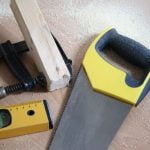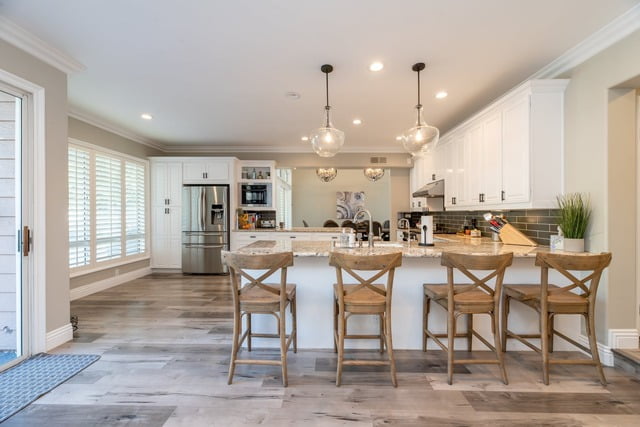Are you considering making improvements to your home but are hesitant due to the financial burden it may bring? That’s where a home improvement loan comes into play.
At times, many homeowners might feel overwhelmed by the costs of renovations or upgrades, and this is precisely where a home improvement loan can offer support. In this article, we will explore how does home improvement loan, diving into the different types available, the pros and cons of taking out such a loan, and tips for choosing the right option for your specific project.
When it comes to financing home improvements, there are several options to consider. From personal loans to home equity loans and lines of credit, each type of loan comes with its own set of benefits and drawbacks. This introduction seeks to shed light on the significance of understanding these differences in order to make an informed decision when seeking financial assistance for your home improvement needs.
Furthermore, as we delve deeper into the topic at hand, we will discuss what a home improvement loan actually entails and why it is important. We will also explore how these loans work to provide homeowners with funding needed for various renovation projects.
Understanding the ins and outs of these loans is essential in order to maximize their potential benefits while avoiding potential pitfalls. So let’s embark on this journey together as we explore everything you need to know about home improvement loans.
Types of Home Improvement Loans
When it comes to financing home improvement projects, there are several options available to homeowners. Each type of home improvement loan has its advantages and disadvantages, so it’s important to explore these options before making a decision. Here are the main types of home improvement loans to consider:
- Personal Loans: Personal loans are unsecured loans that can be used for a variety of purposes, including home improvements. These loans typically have fixed interest rates and are repaid in monthly installments over a set period of time.
- Home Equity Loans: Home equity loans allow homeowners to borrow money using the equity in their property as collateral. This type of loan typically has a fixed interest rate and is repaid in regular monthly payments over a specific term.
- Home Equity Lines of Credit (HELOC): A HELOC is a line of credit that is secured by the equity in the borrower’s home. Unlike a traditional loan, a HELOC works more like a credit card where the borrower can draw funds as needed up to a certain limit and only pay interest on the amount borrowed.
Each type of loan offers different terms and conditions, so it’s essential to carefully assess your financial situation and the specific requirements of your home improvement project before choosing the right option for you. It’s also important to consider factors such as interest rates, repayment terms, and any associated fees when comparing these loan products.
Pros and Cons of Home Improvement Loans
Benefits of Home Improvement Loans
Home improvement loans offer several benefits to homeowners, including the ability to finance large projects that may otherwise be unaffordable. With a fixed interest rate and predictable monthly payments, these loans provide a manageable way to fund renovations without draining savings or investments. Additionally, for homeowners looking to increase the value of their property, making substantial improvements with a home improvement loan can potentially raise the resale value of the home.
Potential Drawbacks of Home Improvement Loans
While home improvement loans can be advantageous, there are also some potential drawbacks to consider. One downside is the additional debt that will be incurred with a loan, which could affect credit scores and overall financial health if not managed carefully.
Furthermore, some loans may come with high-interest rates or fees that can add up over time, ultimately costing more than initially anticipated. It’s essential for borrowers to carefully evaluate their financial situation and long-term plans before committing to a home improvement loan.
Weighing the Options
When deciding whether to pursue a home improvement loan, it’s crucial for homeowners to weigh the benefits against the potential drawbacks. Before applying for a loan, individuals should thoroughly research and compare different loan options available to determine which one best suits their needs and financial circumstances. Additionally, seeking advice from financial professionals or housing counselors can provide valuable insight into managing finances and making informed decisions about taking on debt for home improvements.
How to Qualify for a Home Improvement Loan
A home improvement loan can be a great financial tool to help you fund renovations, repairs, or additions to your home. However, qualifying for this type of loan requires meeting certain requirements and eligibility criteria. Lenders use these criteria to assess your ability to repay the loan and the risk of lending to you. Here’s an in-depth look at what you need to qualify for a home improvement loan.
- Credit Score: One of the most important factors in qualifying for a home improvement loan is your credit score. Lenders use this three-digit number to evaluate your creditworthiness and determine the interest rate on your loan. Generally, a higher credit score increases your chances of approval and may qualify you for lower interest rates. Most lenders require a minimum credit score of 620 for home improvement loans, but some may have stricter requirements.
- Income and Employment History: Lenders want to ensure that you have a stable source of income to make monthly payments on the loan. To qualify, you’ll typically need to provide proof of employment, such as pay stubs or tax returns, along with other sources of income. Additionally, lenders will analyze your debt-to-income ratio (DTI) to gauge whether you can afford the loan payments alongside your other financial obligations.
- Property Equity: For many types of home improvement loans, having equity in your property is crucial for approval. Equity is the difference between the current market value of your home and the outstanding balance on your mortgage.
Lenders often offer better terms and higher loan amounts to homeowners with significant equity in their properties. You can calculate your property’s equity by getting a home appraisal or by subtracting what you owe on your mortgage from the current value of your house.
| Requirement | Description |
|---|---|
| Credit Score | A minimum credit score of around 620 is typically required |
| Income and Employment History | Proof of stable employment and sources of income are necessary; debt-to-income ratio (DTI) will be evaluated |
| Property Equity | Having significant equity in the property is crucial; lenders offer better terms and high loan amounts with substantial equity |
Choosing the Right Loan for Your Project
When it comes to choosing the right loan for your home improvement project, it’s essential to consider your specific needs and financial situation. With several options available, it’s important to understand the differences between each type of loan to make an informed decision. Here are some tips on selecting the best loan option based on your specific home improvement needs:
- Assess Your Budget: Before choosing a loan, it’s crucial to assess your budget for the home improvement project. Determine how much you can afford to borrow and repay comfortably.
- Evaluate Interest Rates and Terms: Research and compare interest rates and terms for personal loans, home equity loans, and home equity lines of credit. Consider factors such as fixed or variable interest rates, repayment period, and any associated fees.
- Consider Your Home Equity: If you have significant equity in your home, a home equity loan or line of credit may be a viable option. Keep in mind that using your home as collateral carries risks, so weigh the benefits against potential drawbacks.
Furthermore, think about the scope of your home improvement project when selecting a loan. For smaller projects with a defined budget, a personal loan may be suitable. On the other hand, larger renovations or remodeling efforts could benefit from the flexibility of a home equity line of credit. By taking these factors into account, you can choose the right loan that aligns with your specific home improvement needs and financial circumstances.
Ultimately, conducting thorough research and seeking advice from financial professionals can help you make an informed decision. Each type of home improvement loan has its own advantages and disadvantages, so be sure to weigh them carefully before moving forward with your project. Remember that choosing the best loan option will not only finance your renovation but also ensure that you can comfortably manage repayments in the long run.
Applying for a Home Improvement Loan
Once you have decided on the type of home improvement loan that best fits your needs, the next step is to go through the application process. Applying for a home improvement loan can seem overwhelming, but breaking it down into simple steps can make it more manageable.
The first step in applying for a home improvement loan is to gather all the necessary documents and information. This may include proof of income, tax returns, W-2 forms, credit history, and details about your home improvement project such as estimated costs and timelines. Having all these documents organized and ready can streamline the application process.
Next, you will need to shop around for lenders and compare their offers. Different lenders may have varying interest rates, fees, and terms for home improvement loans. It’s essential to carefully review and compare these factors before making a decision. Consider getting pre-qualified with multiple lenders to see what options are available to you.
After choosing a lender, you can then start the official application process. This will likely involve filling out an application form and providing all the necessary documentation. Some lenders may also require a home appraisal to determine the current value of your property. Once your application is submitted, it will undergo a review process before a decision is made.
| Steps | Description |
|---|---|
| Gather Documents | Collect proof of income, tax returns, credit history, and project details |
| Compare Lenders | Shop around for different lenders and review their offers |
| Submit Application | Fill out an application form and provide necessary documentation |
Using Your Loan Wisely
When using a home improvement loan, it’s crucial to budget and manage your funds wisely to ensure the success of your project. One of the first steps is to create a detailed budget that outlines all the expenses associated with the renovations or improvements you plan to make.
This includes the cost of materials, labor, permits, and any unexpected expenses that may arise during the project. By having a clear understanding of how much you need to borrow, you can avoid taking out more than necessary and minimize interest charges.
Another important aspect of using your loan wisely is to prioritize essential repairs and improvements over cosmetic upgrades. While it may be tempting to focus on aesthetic changes, such as upgrading appliances or installing luxury fixtures, it’s crucial to address any structural or safety issues first. By prioritizing essential repairs, you can ensure that your home remains safe and secure while also enhancing its overall value.
Furthermore, it’s advisable to obtain multiple quotes from contractors before starting any work on your home improvement project. This will help you compare prices and negotiate for the best possible deals. Additionally, it’s important to set aside a portion of your loan for unexpected expenses or emergencies that may arise during the renovation process. By being prepared for unforeseen costs, you can avoid financial strain and complete your project without unnecessary setbacks.
Conclusion
In conclusion, a home improvement loan can be a valuable financial tool for homeowners looking to upgrade their living space. Whether it’s a small renovation project or a major overhaul, there are various types of loans available to suit different needs.
From personal loans with fixed interest rates to home equity lines of credit, individuals have choices when it comes to financing their home improvements. It’s essential to weigh the pros and cons of each option carefully before making a decision.
It is important for homeowners to consider their financial situation and borrowing capacity before taking out a home improvement loan. While these loans can provide the funds needed for renovations, they also come with potential drawbacks such as interest payments and the risk of using one’s home as collateral. By understanding the requirements and eligibility criteria for these loans, individuals can better assess whether they qualify and afford the repayment terms.
Ultimately, choosing the right loan for a home improvement project is crucial in ensuring that the funds are used wisely and effectively. By budgeting and managing the loan amount responsibly, homeowners can successfully enhance their living space while avoiding unnecessary financial strain. Home improvement loans can be a practical solution for achieving one’s renovation goals, but it’s important to approach the process thoughtfully and make well-informed decisions based on individual circumstances.
Frequently Asked Questions
Are Home Improvement Loans a Good Idea?
Home improvement loans can be a good idea for homeowners who need to fund renovations or upgrades to their property. These loans can provide the necessary funds to make improvements that may increase the value of the home or improve its livability.
However, it’s important for borrowers to carefully consider their financial situation and ability to repay the loan before taking on additional debt.
What Is the Average Length of a Home Improvement Loan?
The average length of a home improvement loan can vary depending on the lender and the specific terms of the loan. Typically, these loans can have repayment periods anywhere from a few years to two decades.
Shorter loan terms may have higher monthly payments but less interest paid over time, while longer terms may offer lower monthly payments but result in more interest paid in total.
Which Loan Is Best for Home Renovation?
When considering a loan for home renovation, it’s important to compare different options based on factors such as interest rates, fees, and repayment terms. Some common options include personal loans, home equity loans, or home equity lines of credit (HELOCs).
Each type of loan has its own advantages and disadvantages, so it’s crucial for homeowners to do their research and choose the best option based on their individual financial needs and circumstances.

I’m thrilled to have you here as a part of the Remodeling Top community. This is where my journey as an architect and remodeling enthusiast intersects with your passion for transforming houses into dream homes.





